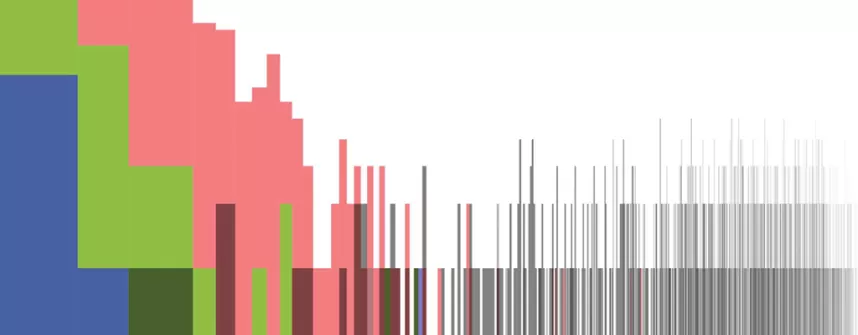Understanding networked interactions among bacteria with the help of data analysis
June, 23 2017
Researchers from Jacobs University Bremen together with colleagues in Kiel and Plön have developed a new data analysis method to analyze bacterial abundances of rare species. Their findings could lead to a deeper understanding of gut diseases.
Bacteria are ubiquitious and higher organisms carry them in high numbers in their body. They digest the leftover substances not extracted for body metabolism, and by this form a network of ecological interactions that are largely unknown in mechanism and function, and act largely unobserved before they exit the body.
While many changes in gut these bacteria composition are associated with diseases including chronic inflammatory diseases, this interaction shows irregularities and high variation.
Even nowadays one still lacks an understanding what comprises a healthy state of a microbiome, how it gets disturbed and where treatment should get a grip.
At this challenging front, researchers from computational systems biology at Jacobs University Bremen, led by Professor Marc-Thorsten Hütt, proposed and tested a new statistical method to analyze such abundance data: first, apply a Boolean logical operation like AND to test whether two bacteria co-occur in the same probe, second, they measured the information gain of this operation, compared to reshuffled data where co-occurence could be at most at random.
On a theoretical interaction model, itself with Boolean interactions, the method performed well as magnifying lens to detect a few interactions that have been thrown like needles into the haystack. Also, the first application to a dataset from a collaboration with researchers at the Christian Albrecht University and University Clinics Schleswig-Holstein in Kiel and the Max-Planck Institute for Evolutionary Biology in Plön showed interactions even on a dataset at coarse grained level.
“Given the simplicity of the method, it is astonishing that such a simple method can detect interactions where established methods of analysis failed'', says Dr. Jens Christian Claussen, Coordinator of Studies at Jacobs University. “Hence we see a good perspective that - even for complicated microbiological systems - asking simple but relevant questions can bring us to a deeper understanding of the mechanisms.''
More information:
http://journals.plos.org/ploscompbiol/article?id=10.1371/journal.pcbi.1005361
http://www.gesundheitsforschung-bmbf.de/de/5677.php#sysINFLAME
http://www.jacobs-university.de
Questions were answered by:
Prof. Dr. Marc-Thorsten Hütt | Professor of Computational Systems Biology
m.huett [at] jacobs-university.de Tel.: +49 421 200-3238
Dr. Jens Christian Claussen | Coordinator of Studies
j.claussen [at] jacobs-university.de | Tel.: +49 421 200-3240
